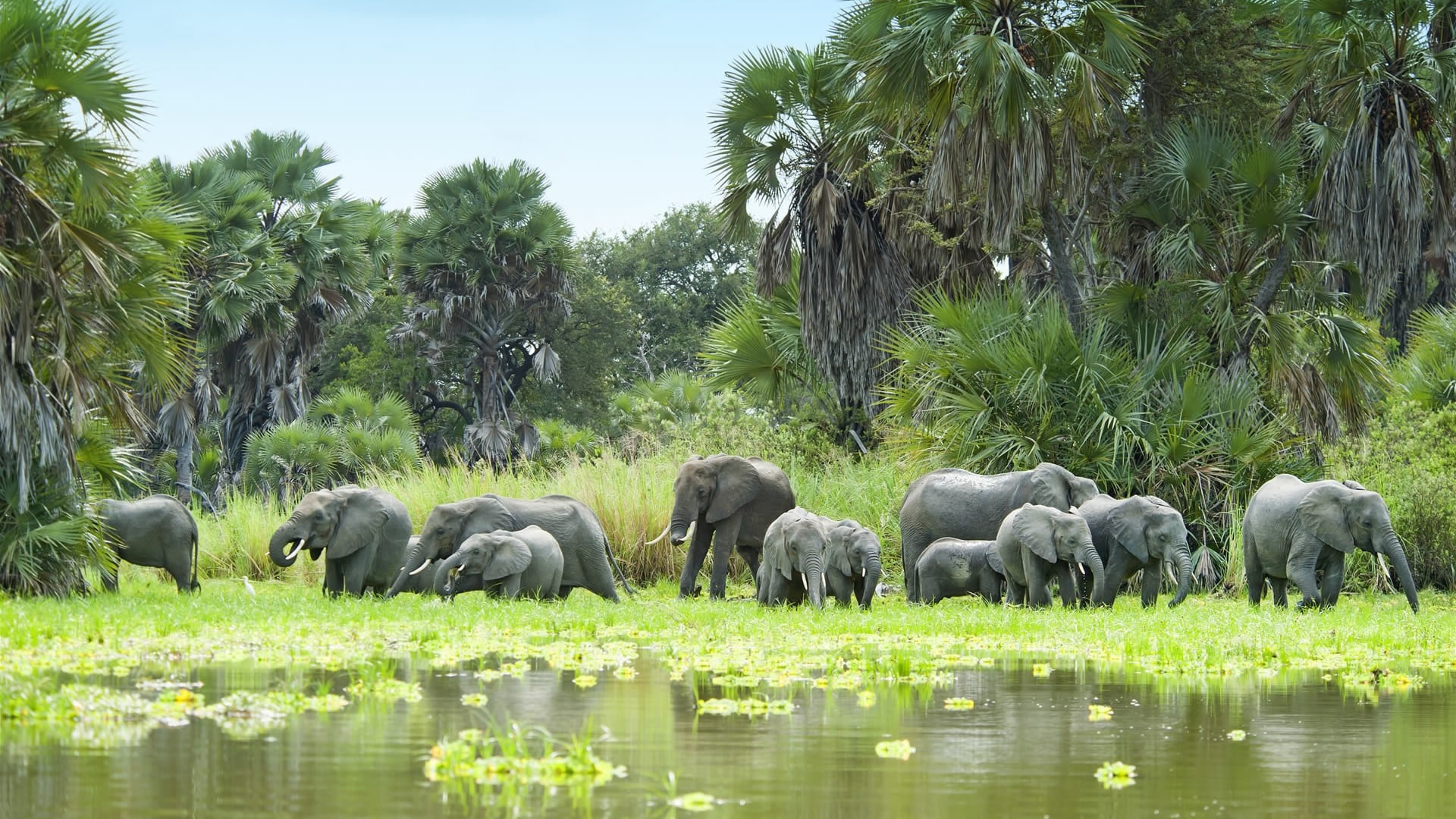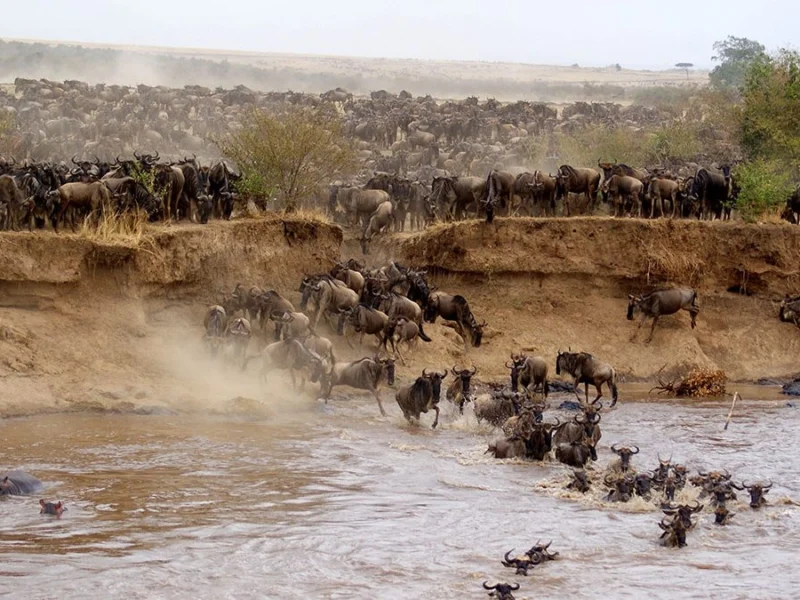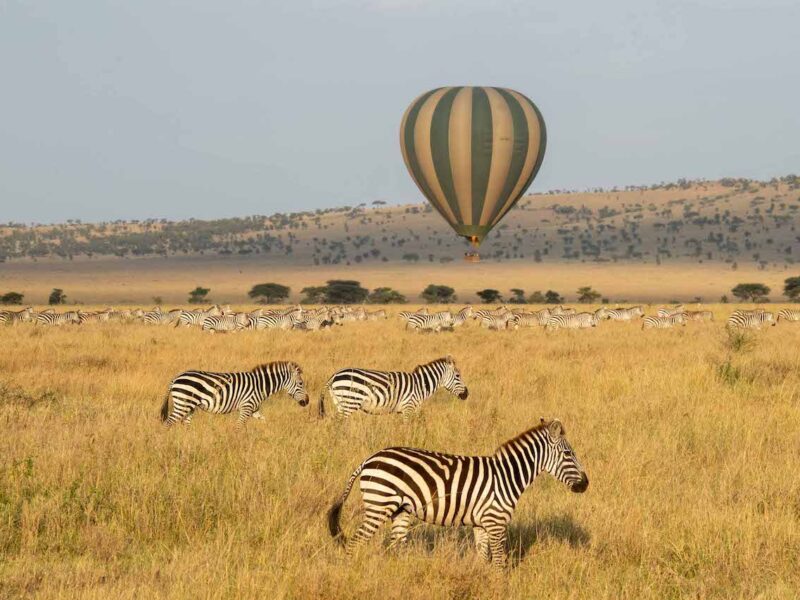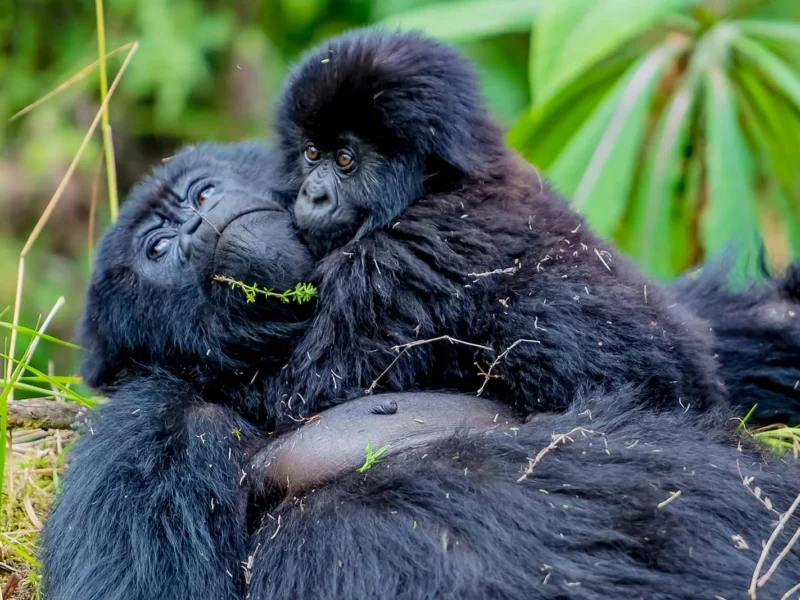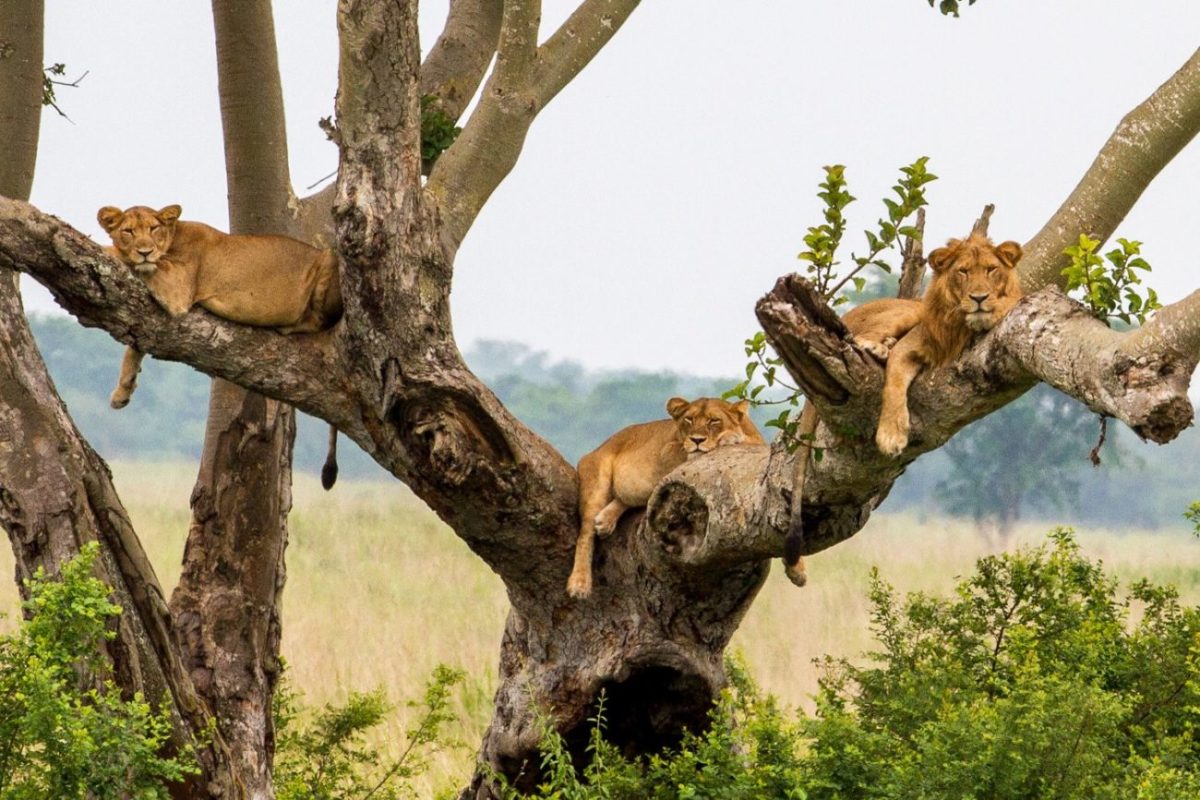
Climbing Lions in Uganda
April 15, 2025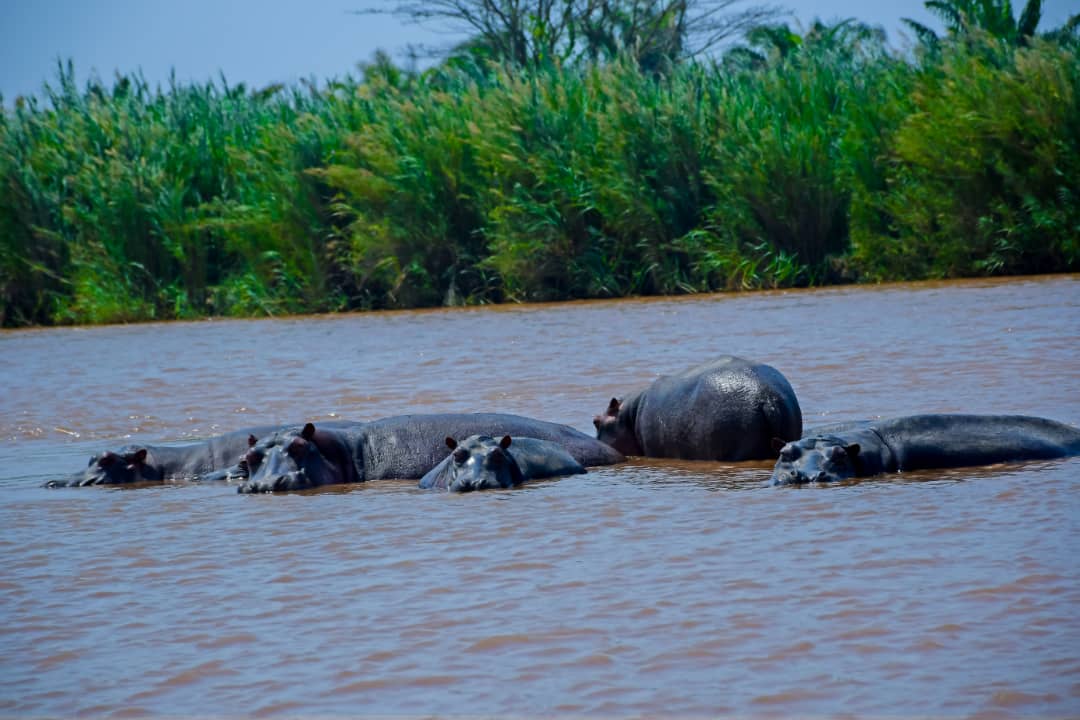
Tourism And Safaris In Burundi
April 15, 2025Nyerere National Park, Tanzania
Overview of Nyerere National Park
Nyerere National Park, formerly known as the Selous Game Reserve, is Tanzania’s largest national park and one of the world’s largest wildlife sanctuaries Established in 2019, it spans approximately 30,893 km²—about the size of Belgium—and is named in honor of Tanzania’s first president, Julius Kambarage Nyerere. The park is situated in the southern part of Tanzania and is characterized by diverse ecosystems, including open grasslands, miombo woodlands, swamps, and riverine forests, all nourished by the Rufiji River, Tanzania’s largest river cite.
Wildlife in Nyerere National Park
Nyerere National Park is renowned for its rich biodiversity, hosting a variety of wildlife specie:
– The Big Five Lion, Leopard, Elephant, Buffalo, and Rhinocers
– Endangered species African Wild Dog (the park is considered a stronghold for this specie)
– Other notable animals Cheetah, Spotted Hyena, Masai Giraffe, Wildebeest, Zebra, Black and White Colobus Monky
– Birdlife Over 400 species, including migratory and resident birsd
The park’s diverse habitats support these species, offering visitors a chance to witness a wide range of wildlife in their natural setting.
Accessing Nyerere National Park
By Road:
– From Dar es Salaam: Approximately 6 hours to main entry gates like Mtemere or Matembe. Road conditions can be challenging, especially the last 75 km, which are on gravel roas.
By Air:
– Daily flights from Dar es Salaam or Zanzibar to various airstrips within the park, such as Mtemere, Matambwe, and Beho Beo. Flight time is under an hour, offering a quicker and more comfortable option.
Activities in Nyerere National Park
1. Game Drives
Game drives are a popular activity in Nyerere National Pr. These drives are conducted in the morning and afternoon, lasting 2 to 3 hours ec. The park is home to a large number of animals, including wild dogs, giraffes, zebras, wildebeest, black rhinos, hippos, buffalos, kudus, hyenas, impalas, and waterbuck. The dry season (June to October) is the best time for game drives, as animals are more easily spotted along the banks of the Rufiji Rier.
2. Boat Safaris
Boat safaris along the Rufiji River and its channels offer unique opportunities to observe wildlife, including elephants, buffaloes, and antelopes, as they drink wee. These safaris provide clear views of animals and birds in their natural habits.
3. Birding
Nyerere National Park is a haven for bird enthusiasts, hosting over 400 bird species found in various habitats, including lagoons, the Rufiji River, swamps, and vegetate. Notable species include palm-nut vultures, African fish skimmers, pink-backed pelicans, yellow-billed storks, African fish eagles, white-crowned spur-winged plovers, hornbills, and white-fronted bee-eatr. The best time for birding is during the wet season (November to April).
4. Walking Safaris
Walking safaris in Nyerere National Park are organized in offbeat tracks where most of the considered dangerous animals are not fun. These safaris are typically conducted during the morning and late afternoon hours, especially during the dry season when the heat is more bearable. Accompanied by armed guides, visitors can observe animals such as elephants, hippos, and zebras up close.
5. Fishing
Fishing safaris in Nyerere National Park are a relaxing way to enjoy the park’s water Fishing is mostly carried out at the Rufiji River, although it can also be done on smaller channels and swamps within the pr. Visitors are advised to carry fishing equipment such as fishing rods, bait, and life jackets, or they can rent. Common fish species include tiger fish and catfish.
6. Hot Air Balloon Rids
Hot air balloon rides in Nyerere National Park offer aerial views of the park and its wildlf. These rides are conducted early in the morning, providing spectacular sightings of the landscape, animals such as elephants and lions, and birds from abv. Nyerere National Park, along with Serengeti National Park, is one of the few Tanzanian safari destinations where hot air balloon rides are offered.
Luxury & Exclusive Lodges
Kiba Point Lodge
– Location: Southeastern Nyerere National Park, near the Rufiji River
– Accommodation: Four private thatched cottages, each with a plunge pool and veranda
– Highlights: Exclusivity, privacy, and proximity to abundant wildlife
– Ideal For: Couples, honeymooners, and small groups seeking luxury
Azura Selous
– Location: Western region of Nyerere National Park
– Accommodation: Luxury tents with air-conditioning and en-suite bathrooms
– Highlights: High-end facilities, exceptional service, and prime safari experiences
– Ideal Foot-travelers desiring a luxurious safari experience
Mid-Range & Eco-Friendly Camps
Lake Manze Camp
– Location Central region of Nyerere National Park, overlooking Lake Manz.
– Accommodation Twelve Meru-style walk-in tents with en-suite bathroom.
– Amenities Outdoor showers, flush toilets, private verandas, and solar-powered lighting.
– Activities Game drives, walking safaris, and boat safari.
– Ideal For Adventure seekers and nature enthusiast.
Selous Serena Camp
– Location Along the Simbazi River in Nyerere National Par.
– Accommodation Twelve luxury tents with Victorian-style deco.
– Amenities suite bathrooms with Victorian claw-foot baths, private sun decks, and ceiling fan.
– Dining Buffet-style meals, bush dining, and sundowners on sandbank.
– Ideal For Travelers seeking a blend of luxury and wilderness.
Sable Mountain Lodge
– Location Beho Beho Hills, northwestern boundary of Nyerere National Park
– Accommodation Six stone cottages and five tented suites, including honeymoon suite.
– Amenities En-suite bathrooms, solar-powered facilities, and private terrace.
– Activities Game drives, walking safaris, boat safaris, and visits to a Maasai village.
– Ideal For Those seeking a blend of comfort and immersive safari experience.
Budget & Backpacker-Friendly Options
Nyerere Green Lodge
– Location: Near the Rufiji River, outside the park
– Accommodation: Ten en-suite rooms with hot and cold running water, air conditioning, and ceiling fast.
– Amenities: Eco-friendly initiatives, including solar energy and rainwater collecting.
– Activities: Game drives, walking safaris, bicycle tours, and visits to local villages.
– Ideal For: Budget travellers and eco-conscious visitors.
Safari Activities Across All Accommodations
– Game Drives: Explore the park’s diverse wildlife, including elephants, lions, and the rare wild dogs.
– Walking Safaris: Guided treks offering close encounters with nature.
– Boat Safaris: Cruise on the Rufiji River or Lake Tagalala to observe hippos and crocodiles.
– Cultural Experiences: Visit local villages and learn about Maasai traditions.
– Fly Camping: Overnight stays under the stars in mobile camps for an authentic bush experience.

